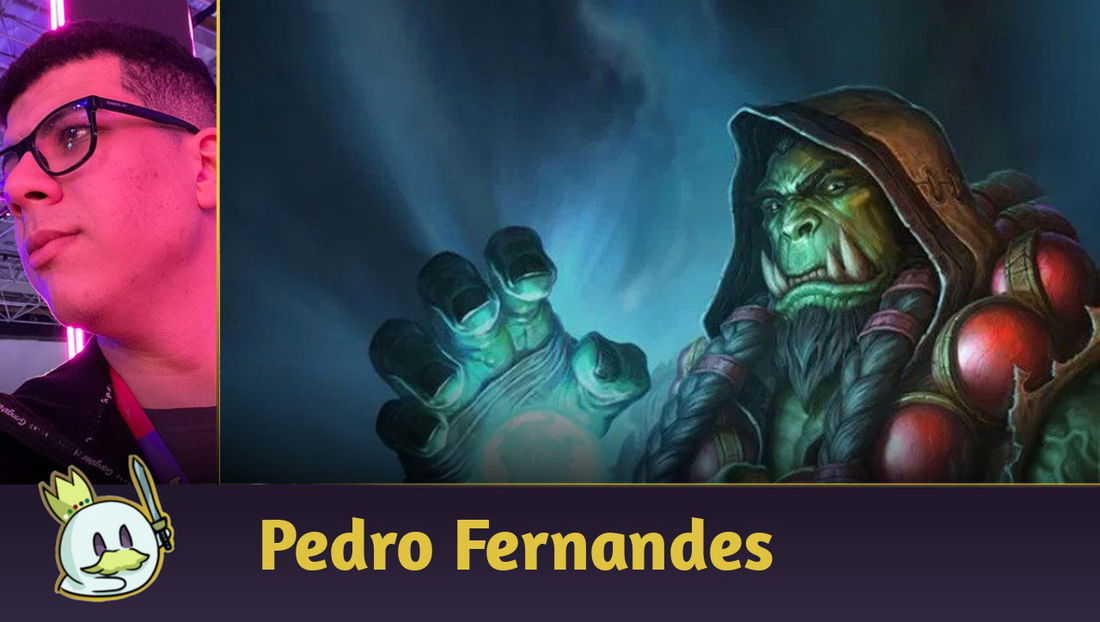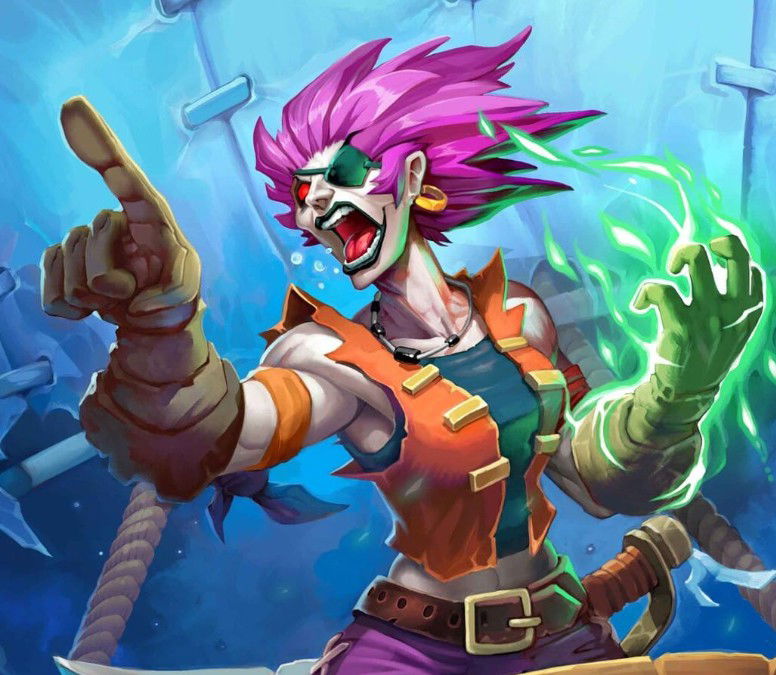Introduction
Today, we'll talk about how the first patch of the Great Dark Beyond will impact meta decks, see which changes will push out old strategies, and which will open opportunities for new archetypes. Some, obviously, will have little to no impact.
This review will was written with those who want to climb to Legend in mind; we also considered that, above the Top 1000 rank, the strongest decks available will be piloted correctly.
Nerfs
Reno, Lone Ranger

This Lone Ranger has always been at the edges of the meta, and often decided matches as soon as he hit the board. Now, however, his "board clear" effect spares Locations and Spaceships, and (an even bigger change) he no longer limits the enemy board to 1 space on the following turn.
Reno's greatest strength wasn't only that he cleared the enemy board; he also forced your opponent to summon only one minion on the following turn, so they'd also have a weak turn afterward. With him, you'd take full control of the match. Now, he is vulnerable to what every board clear is vulnerable to: your opponent will be able to redevelop their board immediately after.
Druids might still be interested in building decks around him, considering this class doesn't naturally have tools to deal with big units. However, other classes that played this card, like Death Knight, Warrior, and Shaman, have their own, more efficient tools to clear boards, and they don't restrict your deckbuilding.
Rogue

Quasar didn't perform well competitively, but everyone agreed that decks built around it created very drastic game experiences. Delaying this card for two turns will make this strategy impracticable for good.
There was a key interaction with Everything Must Go!: after returning a Robocaller to your hand with Pit Stop or Shadowstep, you would draw two copies of Everything Must Go! and a Concert Promo-Drake. As a result, by drawing more cards or discounting the cost of other cards, you'd have a board with 5 minions with 20 attack total consistently on turn 4, and occasionally on turn 3.
It was considered the strongest deck in the format among the top 500 players in the ranked queue.

By nerfing Everything Must Go to 9 mana, it will no longer interact with Robocaller, which means Rogue players will have to find other ways to use Sonya as a win condition in combo decks. For instance, the deck that uses Pressure Points to copy burn spells with Sonya.
"Rogue"

Now, Mage and Paladin decks that play Tourists can no longer use mana acceleration to consistently put threats like Tsunami and Pipsi Painthoof in play two turns earlier. They'll also not be able to do this again on the next turn with the Conman.
The reason behind this is that the dev team reverted the buff they gave to Conniving Conman in patch 30.0.3 and applied the same restriction to Sea Shill.
This will severely affect these decks, and, this way, "mana cheat" strategies will be slow enough that aggro decks will be able to pressure them before they can set up their explosive turns. Control decks, in turn, will have enough time to deal with the rhythm they put their threats in play.
Burn

To highlight decks that win through combat and attrition, the dev team also broadly reduced your ability to deal burn damage directly from your hand.
Now that Lamplighter deals only 4 damage, Elemental decks will have to use 6-cost legendaries with long-term effects, like Saruun and Incindius, if they want to deal 10+ damage directly from their hand on a single turn. This means we won't be able to put as much immediate pressure on our opponents as before.

Seabreeze Chalice and Malted Magma now only affect the board, which means Druid, Shaman, and Knight decks that use Ethereal Oracle as a win condition won't deal as much damage as before.
Other Heavy Nerfs

The dev team effectively cut the amount of mana Funnel Cake produces by half, as it now gives you +1 mana for each Funnel Cake, instead of +2. Furthermore, increasing its base mana cost removes its interaction with Pip the Potent, so decks that need to create a lot of mana for combos can't use it anymore.
All Priest decks relied a lot on this card for their explosive turns, so, considering how weak this class is when it's not focusing on Overheal interactions, this should push out this class from competitive settings.

Making Threads of Despair cost 3 creates a domino effect that eventually impacts how Death Knight decks deal with averaged-sized boards (minions with 3 to 5 HP). That's because you often have to combine this card with Hero Power and another small unit if you don't have a target with 2 HP available.
With this change, you'll frequently look at a giant board and assume Threads can clear it, but, out of nowhere, it will stop clearing it after two Deathrattles, and you'll be left looking like an idiot.
Lowering Power Level in General

Sleep Under the Stars, Wave of Nostalgia, Mystery Egg, and Reska, the Pit Boss now cost more, which will slow down their respective decks for around a turn or less. By changing these cards, the dev team wanted to slow down the top of the meta and open more space for new strategies.
These changes won't completely push these old strategies out of the meta. They'll simply change how powerful a deck has to be to become competitive.
Our Sincerest Apologies To Whoever Plays the Wild Format

Order in the Court now draws a card, so it doesn't interact with The Ceaseless Expanse anymore. Before, this interaction dealt 100 damage on turn 5 with Holy Wrath, so now the Wild format is back to where it was, and you can remove Kobold Monk from this deck.
Buffs
Neutral Starships

Exodar now costs 7, which is very relevant against aggressive decks. Before, you'd have to decide between casting a Starship for 5 mana just for its immediate effect on the board with an Arkonite Defense Crystal, or wait until you could play Exodar to get more armor. Now, as you have to wait less time to use it, you can stabilize and make sure you won't lose to burn for good.

We often put Dimensional Core in play too late to use its Divine Shield well, but now we can use it to impact the game state appropriately, considering its cost.
It is now an option for decks that simply need more pieces for their Starships, either to fulfill conditions that force you to build one, or use effects that grow according to the size of the Starship.
Class Starships

Starship Schematic now always creates a piece that you can play on turn two, considering all Starship pieces from other classes cost 2 or 3. This makes options like Shattershard Turret and Soulbound Spire much more attractive.
Scrounging Shipwright now works with Shadowstep, which isn't the best way to use this spell. However, if you don't have better targets to recycle, you can always try to get a Guiding Figure or Biopod.
The Gravitational Displacer got +1/+1, which will probably make effects that care about the size of your Starship stronger. However, it doesn't solve its main problem, which is that it is a 5-cost card that doesn't do anything on the turn you play it, so spending a turn developing it will still be painful.

Felfire Thrusters and Sha'Tari Cloakfield got +1 HP, which doesn't change the fact that you can't really build Warlock and Druid decks with Starship synergies with a strong enough win condition to stand out. So, these are just slight upgrades for Rogues, as they create random pieces.
Paladin

Interstellar Starslicer now makes Libram of Faith on turn 4 possible, which is as impactful as Tsunami's ideal curve. It creates 9 attack on the board, shared in a way that is extremely difficult to clear on turn 4.
This will create a snowball for this archetype, and you'll only have to find the last 12 damage with spells to make it a win condition. You can get this 12 damage, in turn, with a combination of Libram of Divinity, Holy Glowsticks, and Sunsapper Lynessa.
This change, alongside the nerfs to Mage decks, means Paladin can now fulfill the niche role of decks that explode on turns 4 to 6, which before was filled by Tsunami and Conniving Conman.
Yrel, Beacon of Hope for 4 mana is a lot more relevant, considering it tends to fill your hand. You'll have extra mana to play spells on the turn you play it.
Draenei

Askara and Ace Wayfinder now no longer enter play too late to impact the board, considering turn 4 is the last turn a unit can make favorable trades just because they have a big body. You can see this with Buttons's buff, as it made it a good play on curve.

Astral Vigilant is basically the same as before; it exists to copy a win condition like Velen, Leader of the Exiled or Exarch Akama, and, at the final turns of a match, there's little difference between 1/1 and 1/2. This is just a "placebo buff", as just announcing a card will be buffed is enough to make players try to use it, which may, in turn, inspire new decks and make it relevant in the meta.

Draenei's synergies still only create big bodies at a speed in which control decks can remove them easily, so we're still missing a tool that can consistently turn board advantage into something that ends the game abruptly.
Dirdra and Voronei Recruiter are examples of this: the Crewmates package only creates a board. Your opponent can often deal with it, and the last thing this deck can do is to try to build another board and pray that board reaches the finish line. These buffs don't solve this issue, so Crewmates will still have to wait until the dev team gives this deck a win condition.
Final Words
Patch 31.0.3 will end Conman decks and make the meta less lethal, as well as buff a few new archetypes considerably, particularly Libram and Starships.
Sonya Waterdancer will still limit how slow the meta is, considering this card still represents a big combo threat. Some weaker strategies, like Draenei, Priest, and Warlock, will still have to wait for a future update to find space in the meta.
What about you? What did you think of these changes? Tell us your thoughts in our comment section below.
Thank you for reading, and see you next time!














— تعليقات 0
, ردود الفعل 1
كن أول من يعلق